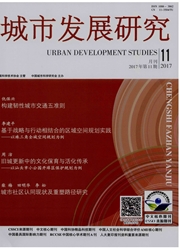

 中文摘要:
中文摘要:
高铁“时空压缩”效应将使都市圈旅游辐射范围进一步扩大。利用GIS空间技术分析方法测度武广高铁对武汉、长株潭和珠三角三大都市圈核心城市可达性影响,结果表明:武广高铁开通前,武汉、长株潭和珠三角都市圈核心城市的各等时圈基本上呈同心圆状,且连续紧凑;高铁开通后各等时圈由同心圆状变为带状,表现出稀疏性和不连续性。三大都市圈核心城市“一日游”所辐射范围的城市数量由高铁开通前不足一半到高铁开通后超过一半;且只需在4~5h以内辐射到三大都市圈的最远城市。以都市圈为基本空间结构单元,通过确定大尺度区域重点旅游发展点、旅游发展轴和旅游地系统,依据“核心—边缘”理论和“板块旅游”空间结构原理,构建不同等级的旅游板块,最终建构武广高铁旅游带,进而实现高铁区域旅游一体化发展目标。
 英文摘要:
英文摘要:
Tourist radiation range of metropolitan area will further expand with the “ Time-space Compression” effect of high-speed rail. This paper evaluated the effect on accessibility of core eities of metropolitan circles involving Wuhan, Changzhutan and Pearl River delta with the method of spatial technical analysis based on GIS. The results showed that Isochronous rings of eore cities of metropolitan circles involving Wuhan, Changzhutan and Pearl River delta showed a shape of continuous and compacted concentric cireles before the open of HSR, which changed to a sparse and discontinuous ribbon after HSR. The numbers of cities which were influenced by eore cities of three metropolitan circles on the “ single-day tour” were less than half before the open of HSR and more than half after the open of HSR ; moreover it took only between 4 and 5 hours to arrive at the farthest city in three metropolitan circles from the core cites. The paper structured the different class tourist plates, finally structured the tourist belt of Wuhan-Guangzhou high- speed rail, and achieved the goal of tourist integrative development of the high-speed rail region on the base of regarding metropolitan circles as a basic unit of spatial structure and determining the important tourist development node, axis and resort system of the large seale region with the theories of spatial structure involving“eore-periphery” and “plate tourism”.
 同期刊论文项目
同期刊论文项目
 同项目期刊论文
同项目期刊论文
 期刊信息
期刊信息
